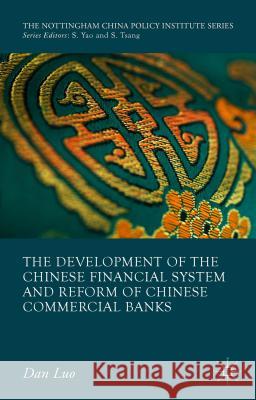The Development of the Chinese Financial System and Reform of Chinese Commercial Banks » książka
topmenu
The Development of the Chinese Financial System and Reform of Chinese Commercial Banks
ISBN-13: 9781137454652 / Angielski / Twarda / 2016 / 247 str.
The Development of the Chinese Financial System and Reform of Chinese Commercial Banks
ISBN-13: 9781137454652 / Angielski / Twarda / 2016 / 247 str.
cena 403,47
(netto: 384,26 VAT: 5%)
Najniższa cena z 30 dni: 385,52
(netto: 384,26 VAT: 5%)
Najniższa cena z 30 dni: 385,52
Termin realizacji zamówienia:
ok. 22 dni roboczych
Bez gwarancji dostawy przed świętami
ok. 22 dni roboczych
Bez gwarancji dostawy przed świętami
Darmowa dostawa!
This book reviews the evolution of the Chinese financial system, examining the effectiveness of reform strategies made by the government over the last ten years.











